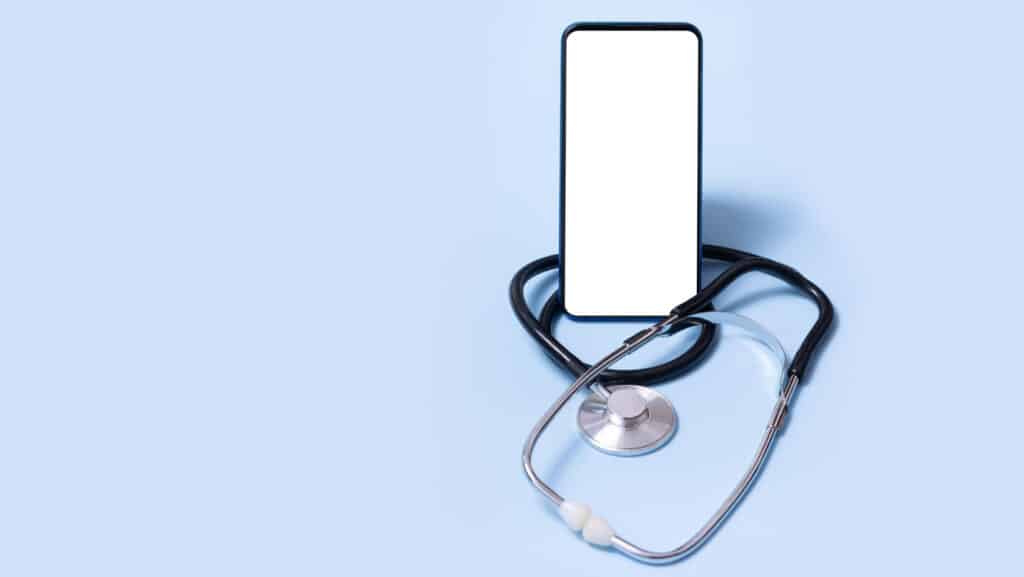If you visit a doctor and the staff asks for your basic information, the chances are they will have your entire medical history ready in seconds. Technology has seeped into every aspect of our daily lives, including the healthcare industry. For the past decade, it has been the fastest-growing sector worldwide.
This growth is mainly attributed to the need for developing medical software for various purposes and the increasing government regulations. Healthcare software is used for multiple purposes like billing, and patient records management, care management, and more. It can be overwhelming to follow up on all the Healthcare software development trends, but we have compiled a list of some of the most important ones.
The Importance of Healthcare Technology is Greater Now than Ever Before
Healthcare software development is a hot topic in the industry right now. This is because of the increased demand for new medical technologies and advancements. However, Healthcare software development has been around for well over a decade. We all remember the promising IBM project Watson in 2014. During the demo, Watson took an array of patient symptoms and generated a list of possible diagnoses. The goal was to include AI in medicine.
Many companies are developing healthcare software to help with various medical practices regardless of Watson’s performance. Healthcare software development trends have been the talk for years. However, with recent events of global pandemics, they have become more critical than ever. The demand for innovation and efficiency drives the fast-paced industry to change and evolve.
One standard software doctors and hospitals use is electronic health records (EHR). EHRs are software applications used to create electronic medical records of medical information and typically include additional information such as patient history, labs, prescriptions, and other related data.
Healthcare software developments that have been occurring in recent years have allowed healthcare IT providers to create applications that are more accessible and user-friendly. These advancements have made it easier for doctors to access their patient’s care anytime, anywhere.
This is just a modest example of how technology can help even in such a complex industry as medicine. The recent trends show high demand and exploration of possibilities that augmented reality and mixed reality can offer to medical institutions. There is great potential for telehealth applications and even assisting surgery.
Healthcare software development trends are important in the future, and each segment can benefit the medical industry by making decisions more efficiently and confidently. In addition, the rapid technological change has led to a rapid shift in what patients expect from their healthcare providers. As a result, healthcare providers need to make sure that they are not just providing medical care but also providing a great customer experience.
What are the Top Healthcare Software Development Trends & Predictions in 2022 and Beyond?
The healthcare industry is one of the most rapidly evolving industries in the world. With new medical technology and innovations, it will continue to grow in leaps and bounds. The following are some of the top healthcare software development trends in 2022 and beyond:
The rise of telehealth and telemedicine
Telemedicine and telehealth use telecommunications technology to transmit health care information or services for patients in one location. Telemedicine is called “remote patient monitoring” and “remote care.” Telemedicine allows healthcare providers to offer accessible, remote, cost-effective, and timely care.
Telemedicine services vary and can be provided via different technologies such as email or other real-time communication tools. Telemedicine is a new way of delivering medical care and prescription medication to patients across the globe. As one of the top healthcare software development trends, it is expected to rise, especially in the areas where doctors are scarce.
The use of wearables to monitor health conditions
Wearable technology is nothing new, yet there are possibilities for its use within the medical profession. For example, some people use these devices to monitor their health and fitness levels. Other people use them for general wellness, such as monitoring their stress levels or even the air quality in their immediate environment.
But, there is also an idea of its use to monitor the patient’s health at a long distance. These devices can be worn on the wrist, clipped onto clothing, or even placed in a pocket. They can track different aspects of your life and provide helpful feedback on how you’re doing.
Artificial intelligence (AI) assistants for doctors
The way we interact with medical professionals is about to change drastically. Artificial intelligence, or AI, can dramatically enhance healthcare quality by empowering doctors to diagnose diseases and prescribe treatment plans more accurately and efficiently.
The future of medicine as we know it is new Al-powered technologies. There has been a significant increase in its popularity from automated tasks to much more complex activities within medicine. As a result, AI may be one of the healthcare software development trends that will gain more traction.
The use of blockchain technology to protect patient data
Blockchain technology is being used to protect patient data in hospitals. This information is encrypted and stored on the blockchain. It doesn’t matter how many people look at the records. Information cannot be accessed by anyone other than the key owner.
Blockchain technology is a new way of storing and transferring data in a trustworthy manner. This technology has already been implemented in various industries and is now being used to improve healthcare by ensuring patients’ records are safe, accurate, and accessible.
Virtual reality therapy for physical ailments as well as mental health
Recent studies have shown that virtual reality therapy is a way to treat phobias, PTSD, and mental health disorders. It uses VR technology to create simulations of the environment that the person is afraid of. For example, it can help people overcome their fears in a safe and controlled environment. Virtual reality therapy allows people to understand the challenges they face or their concerns in a manageable way and then overcome them. Additionally, VR will enable people to have one-on-one therapy without the risk of personal disclosure.
The rise of patient-centric care
Another healthcare trend is the shift from a hospital-centric to a patient-centric care model, emphasizing integrated and whole-person care. It is one of the primary drivers of the growth, increasing demand for healthcare professionals who deliver high-quality patient-centered care.
Hospitals and other facilities have long been the focus of health care delivery because they provide many health services but have often failed to meet patient needs. Software development can help professionals provide better services to their patients. However, it remains an active factor that depends solely on human principles.
mHealth demand
In 2022 and beyond, we will see a rise in mHealth or mobile health. This will be mainly due to the advancements in smartphones and wearable devices. These devices will give patients more information about their health and how they should care for themselves. In addition, as more smart devices enter our homes, it will make it easier for patients to communicate with their doctors.
3D printing
3D printers have swiftly become one of the market’s trendiest technologies. These printers are used in healthcare to generate implants and even joints for use during surgery. In addition, 3D-printed prosthetics are becoming increasingly popular because they are completely customized, with digital capabilities allowing them to fit an individual’s specifications down to the millimeter.
What is the Current State of Health-Tech in Different Countries?
The health-tech sector has been increasing with the advancement of technology. Countries all over the world are investing in this sector and trying to promote their own health-tech companies. However, health technology trends are constantly changing, making it challenging to keep up with them.
One country that has been making strides in the health industry in China. The Chinese government has been investing heavily in the research and development of new medical technologies. As a result, China, the world’s third-largest pharmaceutical market, is now projecting a 30 percent annual growth rate.
Another country that has been advancing in the health industry is the United States of America. The US government has allocated billions of dollars to research and develop new medical technologies. One of the major areas that they have been working on is 3D printing. As a result, 3D printing has become a popular method for creating medical implants and prosthetics.
Tech innovation in India can potentially alter healthcare delivery in the country. The country has over 400 biotechnology enterprises, marking a 300 percent increase in the last five years. Regardless of the geographical location, the evolution of technology in healthcare is perhaps just as much needed as it is a natural chain of events.
Technology can give humans insight and solutions to otherwise tricky questions. For example, the industrial revolution was driven by technological innovations of new products such as steam engines and railroads. Technological advancements will drive the third industrial revolution in the modern age.
Conclusion to Healthcare Software Development Trends
Healthcare software development trends have been changing rapidly in the past few years. With the demand for more personalized care and better treatment, hospitals are now investing in technology to improve the quality of their services.
However, the ethical question remains open. For example, we talk about Neurotechnology or hackers disturbing the delicate software that maintains human life. Where does the implementation stop and still be able to help humankind without jeopardizing privacy or making permanent consequences on the patient’s life?
The future of healthcare software development is bright with innovations that will make healthcare more accessible to everyone, regardless of location or income.






